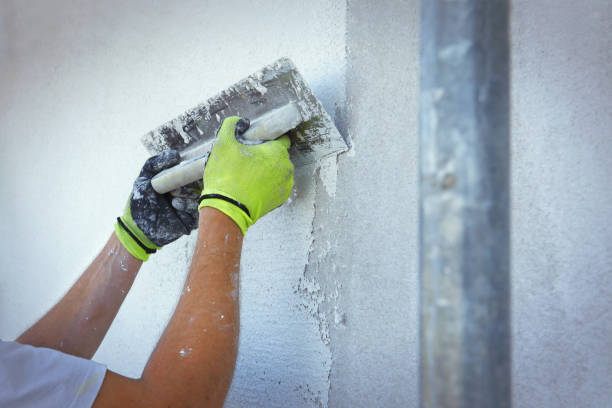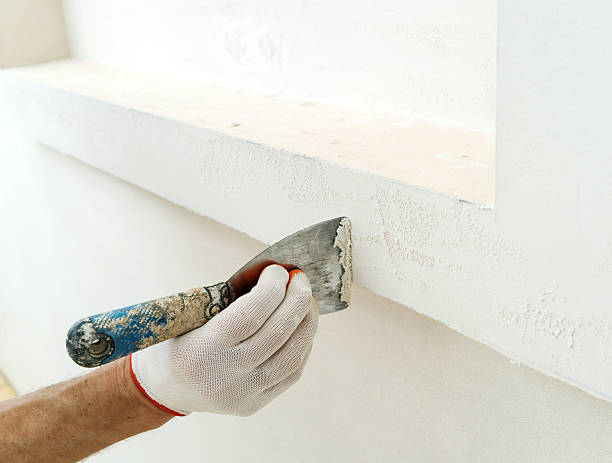“Can you render in the rain? Rain’s delicate pitter-patter or persistent torrent captivates us. How about rain as a rendering ally? Learning to render in the rain expands your creative potential and ensures no weather can dampen your spirit.
Wet weather rendering has advantages and disadvantages. It may need extra precautions and changes, but it can improve the outcome. Rainy rendering has challenges and opportunities, and this essay will provide secrets any rendering fan should know.
Understanding how to render in the rain not only embraces the beauty of wet weather but also enhances your skills and adaptability in achieving excellent results.
Water-Render Bonding: Protect Render to Dry
The Delicate Balance: Building a Strong Bond in Wet Weather
While rendering in adverse weather, a firm bond between the render and substrate is complex. Render cannot stick to the surface because of rainwater. This can cause peeling and flaking, compromising the render. This challenge requires a deep understanding of the elements and strategic methods to succeed best.

Surface Preparation: Essential for Success
Surface preparation is crucial for rendering in damp conditions. Remove any loose or flaking render from the substrate to establish a clean and solid base. Waterproofing chemicals or primers can improve the render-substrate bond, making it more rainproof. Surface preparation sets the stage for a successful rendering project in any weather.
Surface Preparation: Success Key and Render Accelerator
Surface Preparation Before Rainfall
Surface preparation is essential for efficient render application, especially in the rain. Steps to ensure a firm foundation:
Inspect and Clean
- Check the substrate for loose or flaking render.
- Remove damaged areas with a scraper or wire brush.
- Keep the surface clean.
Wash and Dry
Remove leftover pollutants by washing the surface with water and a mild detergent. Rinse and dry it before continuing. Surface moisture might impair render-substrate bonding.
Use a waterproofing compound or primer to strengthen the bond and protect against rainwater. These chemicals prevent water infiltration and strengthen the render-substrate bond. Discuss your project needs with professionals or manufacturers to find suitable products.

Why Remove Loose Render and Waterproof
Removing loose or peeling render ensures a robust rendering base in wet conditions. These weak places may weaken the render and cause cracking or detachment if left unchecked. Fixing these regions first provides a more substantial base for the new render.
Applying waterproofing chemicals or primers strengthens the surface against rain. These chemicals prevent water seepage and strengthen the render-substrate bond. They assist render in surviving rainy environments and last longer.
Rain's Natural Benefits
Rain Rendering Advantages Over Dry Weather
Rendering in the rain may seem contradictory, yet it can improve your product. Consider these benefits:
- Natural Hydration: Rainwater moisturises render. It adds moisture to the mix, helping it cure and harden. The finish may be more rigid and more durable.
- Extended Workability: Rainy weather increases humidity, which slows render drying. This increased workability gives you more time and freedom to finish smoothly and precisely without quick drying.

Rainwater's Effect on Curing and Workability
Rainwater is essential to provide a cure. It aids chemical reactions that solidify wet render as it interacts with the mix. Rainwater actively hydrates render particles, connecting and strengthening them.
Rainy conditions increase humidity, which causes the render to dry slowly. Since the render remains malleable for extended periods, smoother applications and intricate details are possible.
Utilising rainwater and the cooling and thawing in the winter months helps the type of render used on the exterior wall sustain integrity and uniformity to help achieve a beautiful finishing look!
Success Strategies
Practical Rain Rendering Tips
Rain rendering needs preparation and execution. Here are some practical success tips:
Consider rendering when rain showers are light or sporadic. It is advisable to avoid prolonged rain, as it may cause damage to the render-substrate relationship, affecting the render finish. Stay informed about weather conditions and organise your work accordingly to avoid structural damage the render may suffer.
Protective Coverings & Shelters:
- Protect freshly placed render from direct rains using tarps or plastic sheeting.
- Secure the coverings to prevent water from entering.
- Use temporary shelters or scaffolding to control the work environment.
Alter the Mix for Moisture Absorption
Consider air moisture and alter the mix for optimal consistency. Rainy circumstances increase humidity, slowing drying. Try mixing with more cement or accelerators due to the extended curing period.
Utilising Rain's Unique Effects on the Rendered Surface:
- Use rain’s artistic chances to achieve the best conditions of colour and texture.
- Allow raindrops to produce unique textures and patterns on freshly created surfaces on the topcoat.
- Try lightly brushing or stippling wet render to provide visual flair.
- Use rain’s unpredictable nature to inspire your creativity and achieve cementitious art.

Key Takeaways
- Thoroughly prepare the surface by removing loose renderings and applying waterproofing agents to establish a solid base for wet weather rendering.
- Utilise rain’s natural advantages, like hydration and increased workability, to improve curing and provide additional artistic opportunities for a better finish.
- Plan rendering during light or intermittent rain, employ protective coverings and modify the mix for optimal consistency to adapt to rainy weather challenges.
The Bottom Line
“Can you render in the rain? Rendering in the rain can be both challenging and creatively fulfilling. Achieving excellent results involves preparing the surface, adapting to rainy conditions, and utilising rainwater. Embracing various weather conditions, whether it’s snow, sun, or rain, enhances the satisfaction of completing the rendering process optimally!
We emphasised the importance of surface preparation, such as removing loose render and waterproofing. Exploring how rendering in the rain hydrates and extends workability, we provided valuable insights. Additionally, we offered great advice on scheduling, using protective covers, adjusting mixes, and leveraging the unique effects of rain on the rendered surface.
Don’t shy away from rain, whether you’re a professional renderer or a DIY enthusiast. Embrace the challenge, adapt your techniques, and let your work shine through the showers. Enjoy the art of rendering!”



